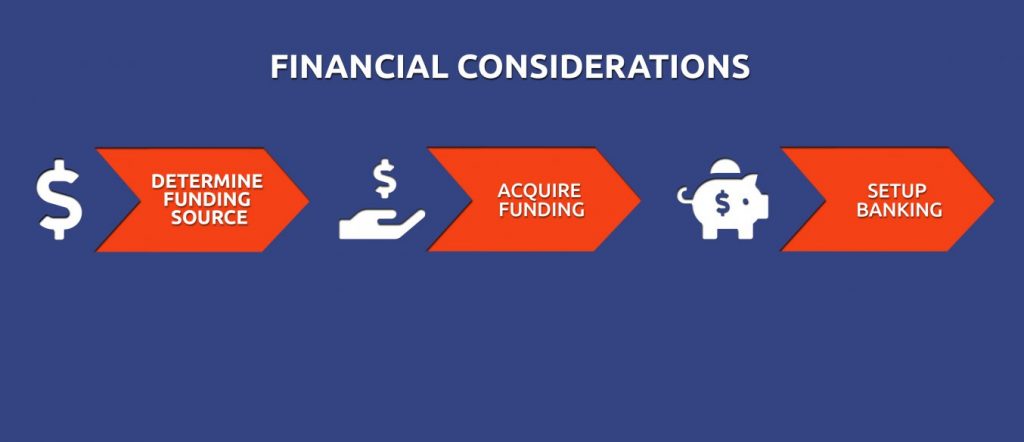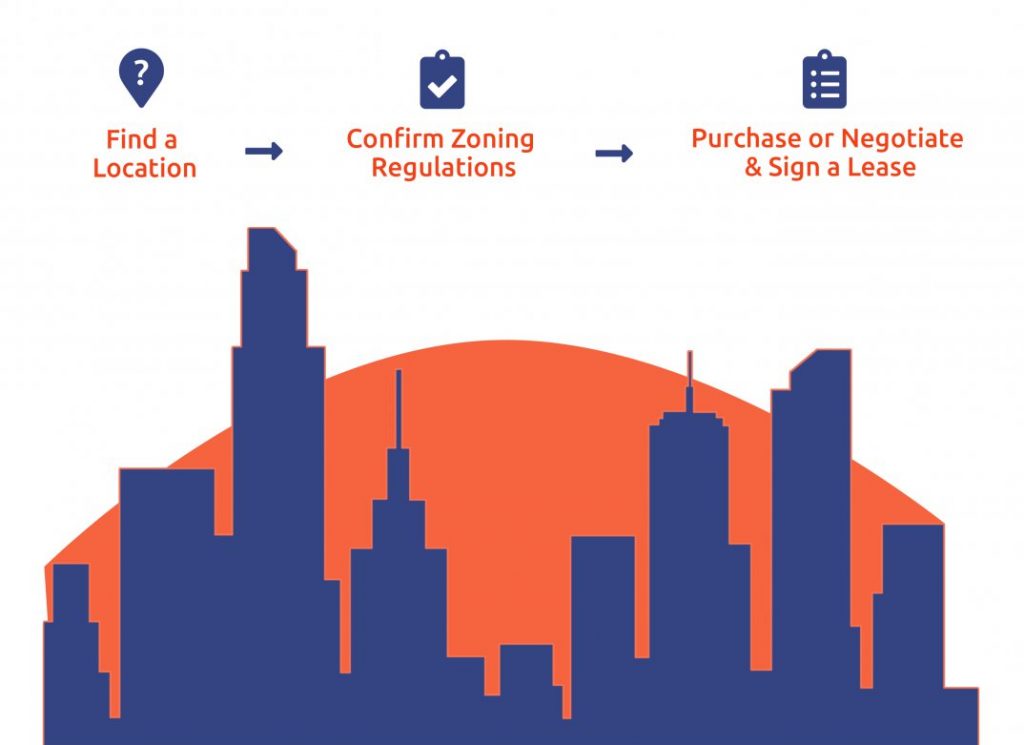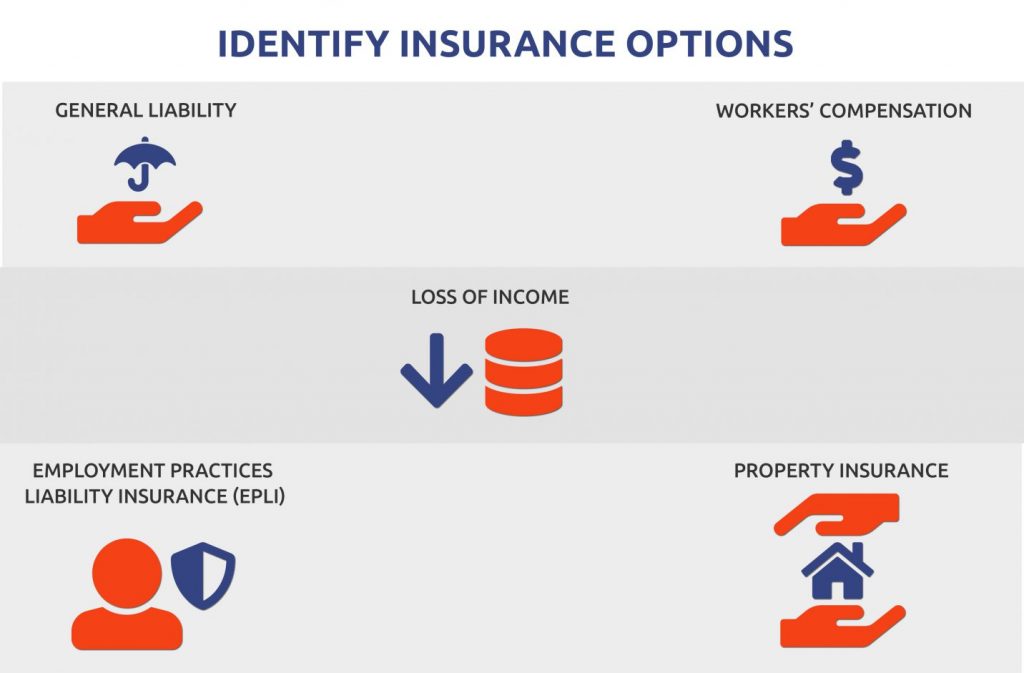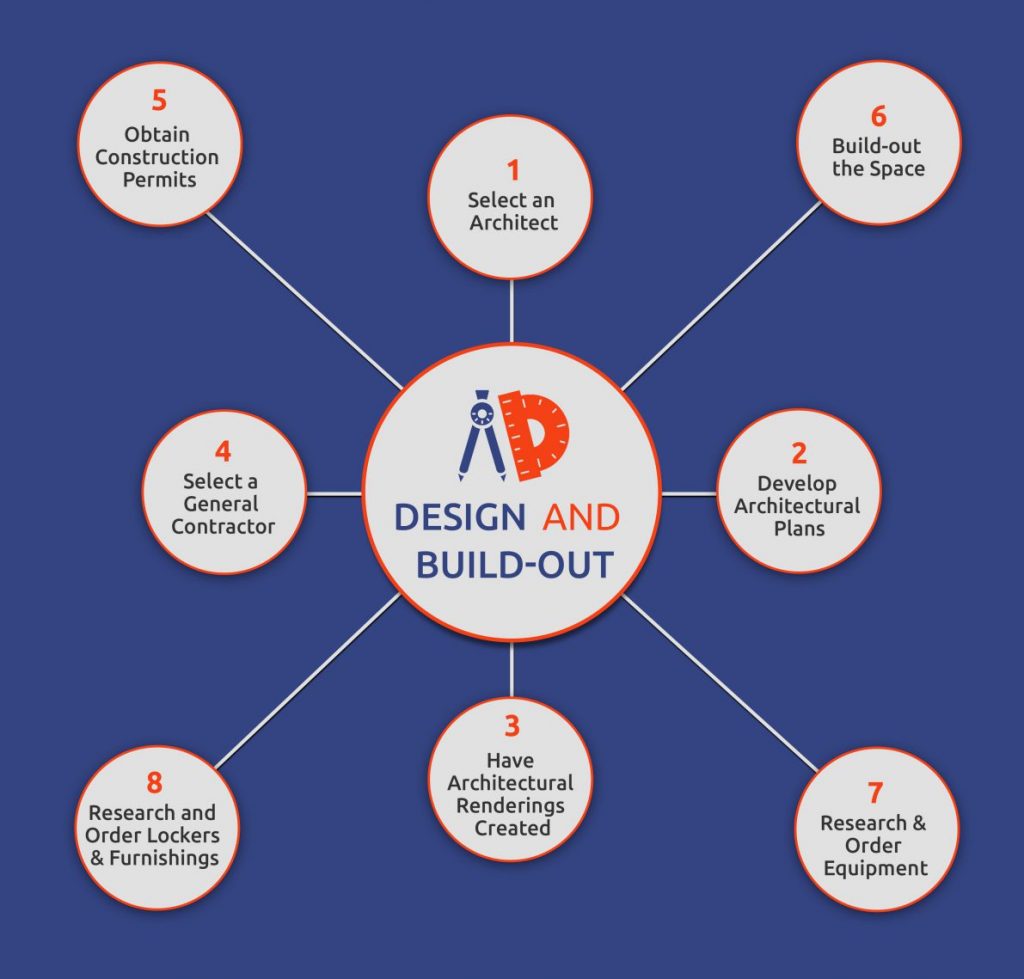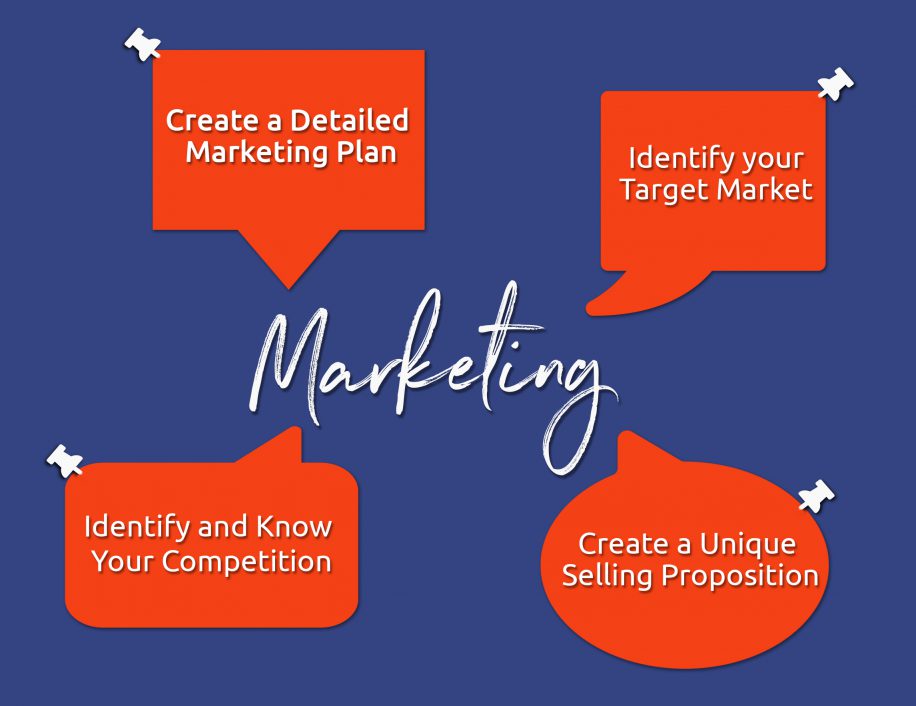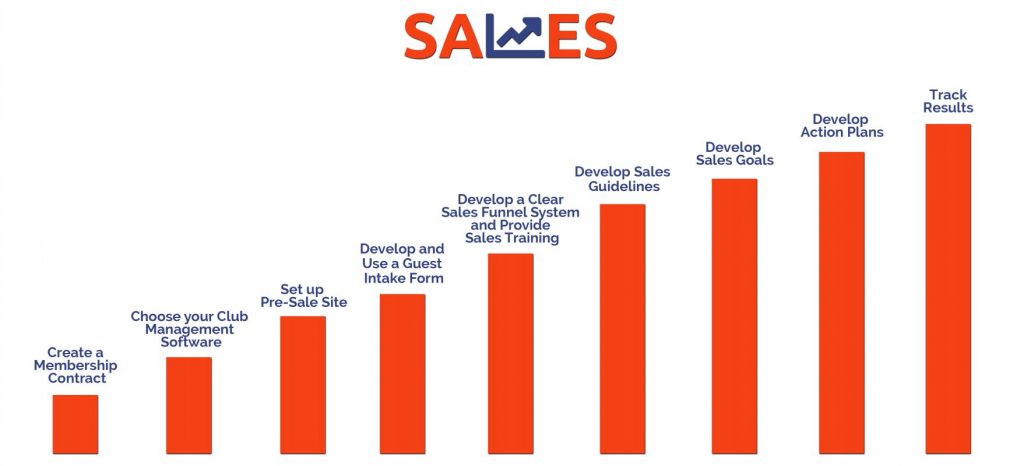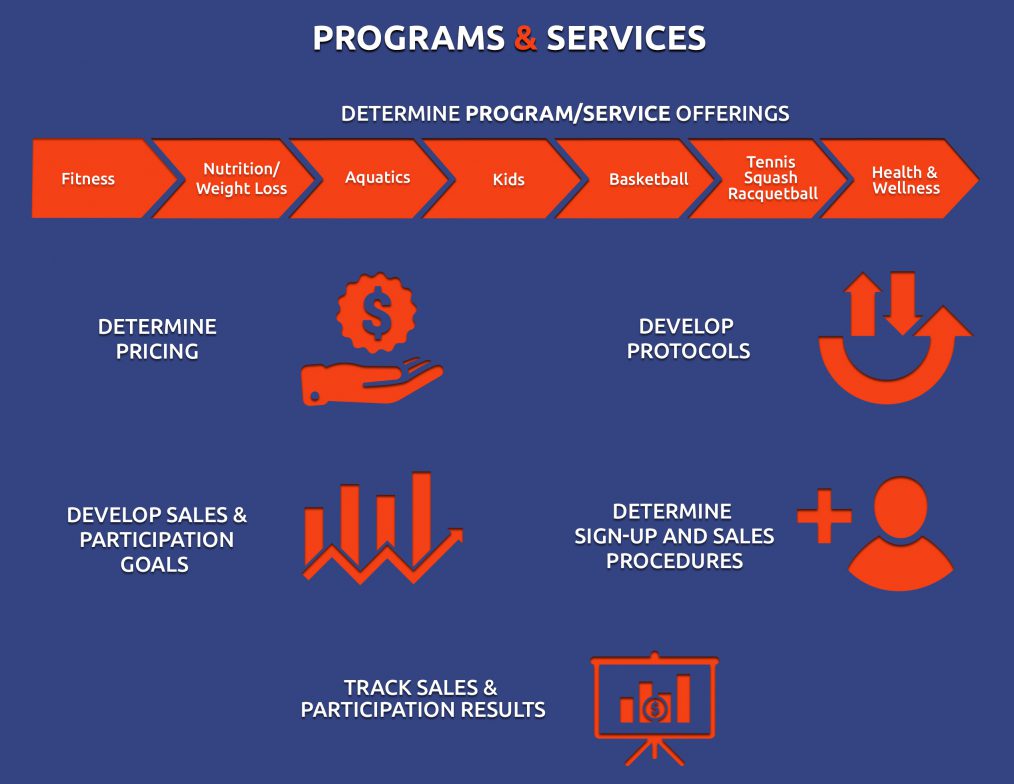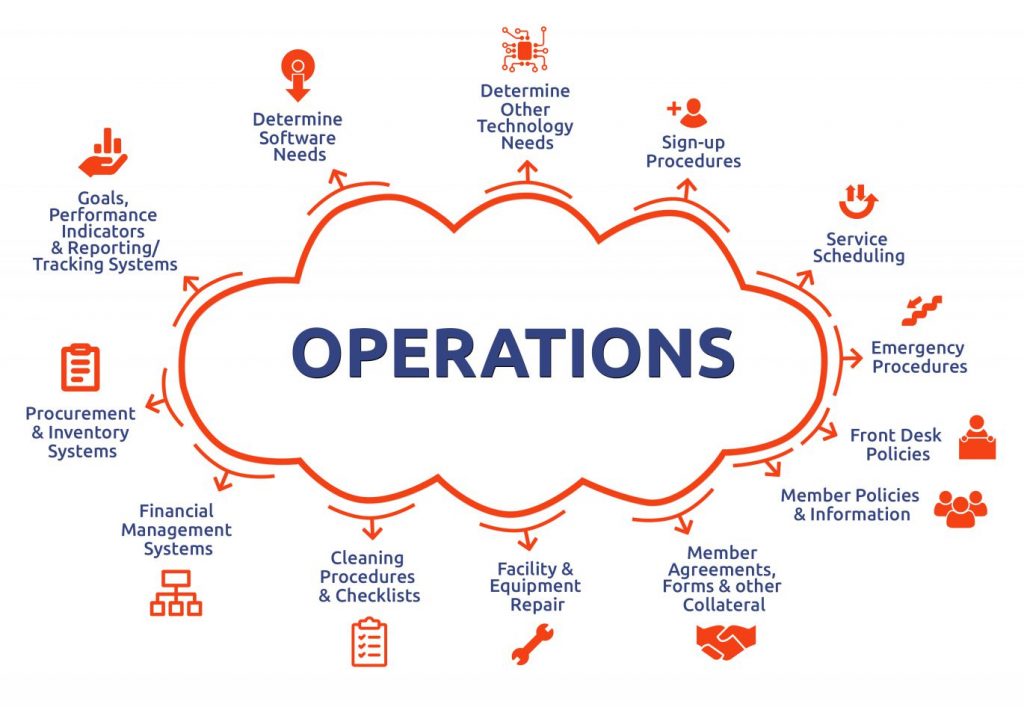The Ultimate Guide on How to Open a Gym or Studio
The #1 question we get from potential entrepreneurs is, “What are all the things I need to do to open up and create a successful gym?”
This article will provide an overview of the tasks associated with opening a gym or studio. Since there is a lot here to digest, we’ve broken up the development and start-up tasks into chapters.
CHAPTER 1: FEASIBILITY & PLANNING
CHAPTER 4: LOCATION/SITE SELECTION
CHAPTER 10: PROGRAM & SERVICES
CHAPTER 1: FEASIBILITY & PLANNING
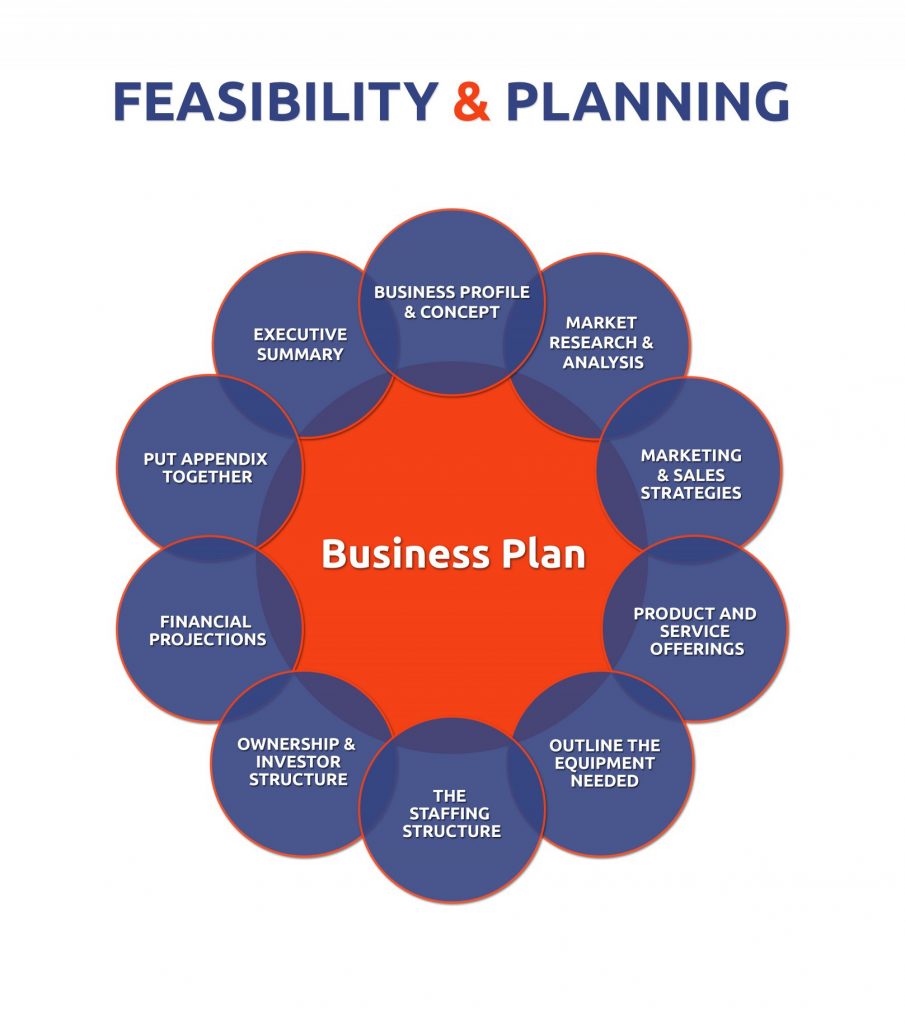 Start-Up Task #1: Conduct a Feasibility Study
Start-Up Task #1: Conduct a Feasibility Study
A feasibility study is a comprehensive analysis of a business idea’s viability and helps answer the essential question, “should I/we proceed with the proposed project?”.
Our feasibility studies define the service offerings, target customer groups, primary and secondary market size, and overall market potential.
In addition, they provide a competitive and business climate analysis and analyze the financial potential through the development of a realistic financial model.
Given the knowledge needed to complete a feasibility analysis, it is often beneficial to work with an expert to accurately assess your business concept before sinking time, money, and effort into something that may not have a positive return.
You can learn more about our feasibility studies here.
Start-Up Task #2: Write a Business Plan
A well thought-out business plan is a roadmap that takes you from idea to profitable company. It outlines goals and provides you with financial projections and turn-by-turn directions to achieve them.
This document will assist you in procuring funding via a bank or private investors and leasing a space given prospective landlords want to make sure your business will be around long-term.
If you started with a feasibility study, most of the information in it can be used in your business plan.
For more on how to write a great business plan, check out our post on how to write a business plan.
Start-Up Task #2a: Determine Your Business Profile and Concept
What is the underlying concept of the business, i.e. what problems does it solve for potential customers and what are its objectives?
Start-Up Task #2b: Complete Your Market Research and Analysis
Research and analyze industry trends, location benefits, the competition, the demographics of your primary and secondary markets, and determine your customer profile and the market segments you’ll be targeting.
Start-Up Task #2c: Develop Pricing Models, Sales Forecasts, and Marketing/Sales Strategies
Create your membership and service pricing models in order to forecast your sales over the next five years.
Take into consideration you should have a ramp up period and include seasonality. Depending on where your gym or studio is located, sales can be stronger in some months (like January) and slower in others (like July and August).
Create an outline of potential marketing strategies for acquiring leads as well as sales processes for turning those leads into customers.
Check out our blog, 9 Strategies for Marketing a Gym for ideas of marketing tactics you can use.
Start-Up Task #2d: Outline Product and Service Offerings
Determining the mix of revenue and non-revenue products and services you’ll offer is a critical component of defining your business.
In addition, detail the type of service environment you want to create for your customers.
These areas will have a large impact on if you can eventually meet your financial goals.
Start-Up Task #2e: Envision the Facility and Equipment Needs
Describe the facility’s key characteristics:
- size
- number of studios
- atmosphere
- location benefits
- etc
Also include an equipment list and your criteria for choosing among the myriad of options.
Start-Up Task #2f: Determine the Staffing Structure
Provide an organizational chart including the number of staff in each position, management profile, staff profile, and compensation and benefits plans.
Start-Up Task #2g: Describe the Ownership and Investor Structure
Describe the legal structure of the business, how much equity investors will have, what their return on investment will be, and how they can exit the business if necessary.
Start-Up Task #2h: Complete the Financial Projections
One of the most important documents is the financial summary followed by detailed five-year projections based on best, expected, and worst-case scenarios.
This will include:
- industry benchmarks and ratio comparisons
- income statements
- balance sheets
- start-up costs
- debt
- deferred revenue
- staffing hourly projections
- payroll projections
- cash flow statements
The financial projections provide potential loan officers and investors with the information they need to decide to invest in your business.
Start-Up Task #2i: Create an Appendix
Your appendix can include a variety of documents that support the rest of the plan including management team resumes, job descriptions, maps, demographic specifics, facility architectural plans, marketing plan specifics by month, and any other relevant supporting documents that will help make your case.
Start-Up Task #2j: Write the Executive Summary
Although the Executive Summary appears at the front of the document, it is the last part of the document you should write.
You’ll want to summarize the key elements of your plan. Keep in mind, most investors or loan officers won’t read beyond the Executive Summary unless you make it compelling.
Start-Up Task #2k: Create a Deck
Once the details of the plan are completed, you will probably want to create a deck that summarizes your plan and is easy for interested parties to read. A deck is a great tool to use when presenting your ideas or making a sales pitch to investors or other interested parties. Don’t make the deck too wordy and add some graphics to capture key themes.
CHAPTER 2: LEGAL
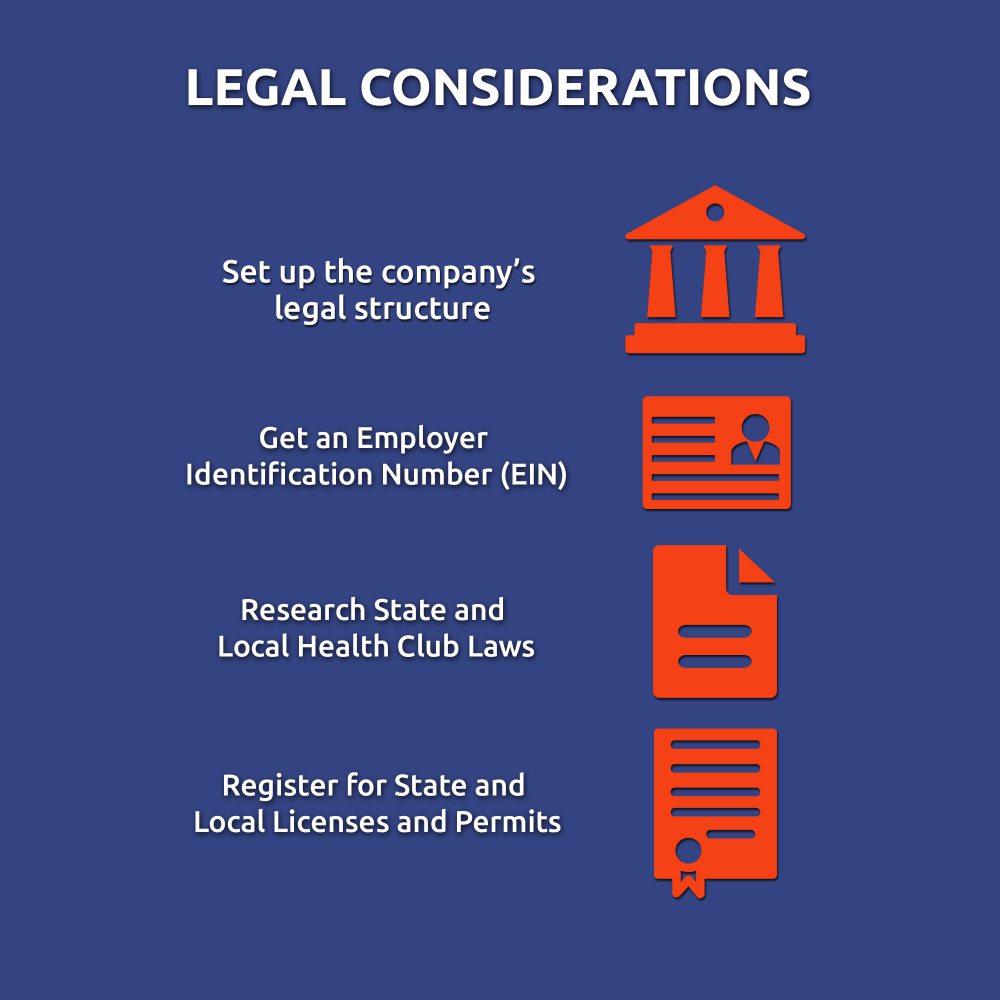
Start-Up Task #3: Set up the Company’s Legal Structure
If your gym is not going to be part of an existing company, you’ll need to decide the best legal structure for your business.
Most common structures are:
- Sole proprietorship
- Partnership
- S corporation
- C corporation
- Limited Liability Company (LLC)
Each structure has advantages and disadvantages with regard to taxes, personal liability, transferability, admission of new owners, and investor expectations.
Do your research and check with a lawyer to determine which is the best structure for your gym or studio.
Start-Up Task #4: Get an Employer Identification Number (EIN)
If your business is anything but a sole proprietorship, you’ll need to get an EIN, otherwise known as a Federal Taxpayer ID number.
An EIN is a nine-digit number assigned by the IRS to identify taxpayers who are required to file business tax returns.
You can apply online for an IRS EIN.
Start-Up Task #5: Research State and Local Health Club Laws
Most states have specific statutes and regulations specifically for fitness related businesses.
These can include requirements regarding AEDs, member contracts, cancellation policies, bonds, and more.
Knowing the state and local requirements is crucial for avoiding fines or lawsuits.
Start-Up Task #6: Register for State and Local Licenses and Permits
The licenses and permits you’ll need from State and local authorities will depend on the specifics of your business and its location.
To avoid expensive penalties, check in with State and local government agencies to find out what licenses and permits are needed to operate your gym or studio.
CHAPTER 3: FINANCIAL
Start-Up Task #7: Determine How to Fund Your Start-up
If your business is not self-funded, you will have to raise capital through either a loan, attracting investors, or a combination of the two.
With a loan, also known as debt financing, you don’t give up any ownership. However, you’ll need to pay back the money with interest over time.
If you decide to get investors (also called equity financing), you will give up some ownership of the business depending on how much you raise and the specific terms of the deal.
Start-Up Task #8: Acquire the Needed Funding
Armed with a solid business plan, the next step is to present your business idea to those who can provide the capital.
For a loan, check out the Small Business Administration and numerous banks.
If you’re looking for investors, utilize your network and tap into sites like startups.co, crowd funding sites, social networking sites like LinkedIn, and various angel investor networks.
Start-Up Task #9: Set up Bank Accounts
This is pretty self-explanatory. If you’re going to own and operate a business, you’ll need a business bank account.
CHAPTER 4: LOCATION / SITE SELECTION
Start-Up Task #10: Find a Location
Pin down your location and make sure the site you have selected fits the majority of the key characteristics you were hoping for.
Start-Up Task #11: Confirm Zoning Regulations
Make sure the site you have selected is zoned for a fitness business. You don’t want to commit to a space and find out the site cannot house your particular business.
If the site is not zoned for a gym or studio, you may be able to go in front of a zoning board and get the zoning adjusted and the club approved.
Start-Up Task #12: Purchase the Property or Negotiate and Sign a Lease
Close on the purchase or lease of your location.
CHAPTER 5: INSURANCE
Start-Up Task #13: Identify Insurance Options
Here are some general guidelines for the insurance policies you should consider carrying.
General Liability
Industry standard is $1 million limit per occurrence with a $2 million to $3 million aggregate (total limit for all liability claims). However, some landlords and franchise companies require more.
If everyone who works for you is classified as an employee, business’ liability insurance and worker’s compensation policies will cover them.
If they are classified as independent contractors, they’ll need to carry their own insurance. Make sure to get a copy of their certificates of insurance yearly.
Workers’ Compensation
Workers’ Comp provides wage replacement and medical benefits to employees who get hurt on the job.
In most instances, they also protect employers from being sued by employees who get injured while working.
Each state has its own Workers’ Comp regulations and statutes, so make sure you become familiar with the particular rules in your state.
Employment Practices Liability Insurance (EPLI)
EPLI covers you in the event that an employee sues, which is not covered under your general liability insurance.
Premiums are based on the number of staff you employ, the number of claims against the business, and the location of the business.
Property Insurance
Property insurance is vital in case of a fire or other event resulting in property loss.
Make sure the business is insured for at least 90% of the full replacement of the facility and its contents. If it’s not and suffers a loss, the insurance company may only partially cover you.
Loss of Income
If a disaster such as fire, flood, or other natural disaster strikes and forces you to close for a period of time, loss of income insurance will help you pay the bills during a period of restoration.
CHAPTER 6: DESIGN & BUILD-OUT
Start-Up Task #14: Select an Architect
We recommend choosing an architect who has experience designing and building fitness facilities.
Architects with gyms and studios in their portfolio are going to better understand details specific to fitness facilities like best surface and flooring options, space allocations, number of lockers needed, HVAC particulars, and more.
Start-Up Task #15: Develop Architectural Plans
Your architect will develop plans based on your vision and budget.
Start-Up Task #16: Have Architectural Renderings Created
An architectural rendering is important for pre-sales when the facility is not fully built-out. It provides an overview of the layout and design which will give your sales people something to show prospective members.
Start-Up Task #17: Select a General Contractor
Your architect will probably have some construction firm recommendations. Again, it is beneficial if the contractor has experience in the fitness world.
Start-Up Task #18: Obtain Construction Permits
Your general contractor should be the one to apply for the necessary permits needed to build-out the space.
Start-Up Task #19: Build-out the Space
Keep in mind, even well-thought out plans can run into unexpected difficulties and delays. Build-out often takes longer and costs more than you expect especially given current supply and inflation issues, but it’s exciting to watch everything come together as you realize your vision for the space.
Start-Up Task #20: Research and Order Equipment
There are numerous choices when it comes to equipment, so make sure to do your homework. You’ll need to consider various fitness equipment, TVs and sound systems, and equipment needs for add-on services such as massage.
Comparison shop. Talk to at least a few equipment vendors and get quotes. Negotiate! Look at reviews online, consider future maintenance costs and delivery dates and determine whether you’re going to buy or lease.
Start-Up Task #21: Research and Order Lockers and Furnishings
Even prior to the Covid-19 pandemic, lockers could take a while to get and now that waiting time between order and delivery can take even longer than pre-pandemic times. So don’t wait too long to order them.
Locker room benches, office desks and chairs, and other lobby and locker room furnishings will need to be ordered as well.
CHAPTER 7: STAFFING
Start-Up Task #22: Determine the Details of Your Staffing Plan
Your business plan should already have a general overview of the following:
- organizational structure
- management and staff profiles
- general compensation and benefits structures
Although you will have come up with some general compensation models, prior to hiring staff, you may need to add more detail to those models.
Developing compensation structures for each job category can be complicated. For instance, revenue-producing employees like personal trainers and membership advisors should have a pay structure that includes base pay plus commissions and bonuses. Non-revenue producing employees such as front desk and housekeeping staff may get paid an hourly rate.
Hiring staff in the service sector has become more difficult and competitive since Covid-19. Do some research via websites like Indeed, Salaries.com, etc on compensation for each job to see what pay levels are being offered in your area.
Before you start recruiting, figure out how many people you’ll need to hire per position. Take into consideration the number of hours the club will be open each day as well as how many shifts will need to be filled.
Finally, don’t forget to determine the specifics of the benefits plan including who will be eligible and what benefits will be available. With hiring talented staff is so competitive right now, benefits can make a big difference on who applies for and accepts a job with you.
Start-Up Task #23: Write Job Descriptions
Create job descriptions for each job function within your club.
Job descriptions clearly communicate expectations, job duties, responsibilities, qualifications, and skills necessary for successful performance in a particular role.
Start-Up Task #24: Recruit Your Team
After planning out your staff requirements and compensation/benefits plan, you can start recruiting.
Recruiting is a multi-step process and includes:
- creating job postings
- networking
- listing on job sites
- reviewing resumes
- interviewing candidates
- setting up and completing group fitness instructor tryouts
- completing reference and background checks
- developing offer letters
Job postings are different from job descriptions. A job posting is designed to get people interested in the position, while a job description details the specifics of the role.
Our article Recruit Fitness Club Top Talent with a Great Job Posting covers this topic in more detail.
Once offer letters have been signed, new staff will need to complete an I9, as well as a W4 if they are employees or a W9 if they are outside contractors.
Start-Up Task #25: Determine HR Polices and Create an Employee Manual
Employee manuals are necessary to protect the business from litigation and spell out the company’s human resource policies. Certain policies need to be included based on local, state and Federal law.
The U.S. Department of Labor’s website, www.dol.gov, provides information on Federal laws that impact the workplace. For local and state laws, check their respective websites.
An excellent article about employee handbooks can be found here: What to Include in an Employee Handbook.
Start-Up Task #26: Create Employee On-boarding Training
An effective on-boarding process gives your staff the best chance to perform at their highest level as well as improve employee retention.
Create an opportunity for them to be engaged and contributing team members by making sure your new employees know what tasks to do and how to accomplish them.
Utilize on-boarding checklists and processes that include company-wide information and train employees for their job specifics as well as on company-wide policies and procedures.
Start-Up Task #27: Choose a Payroll Company
The most efficient and effective way to handle payroll and its associated taxes is to hire a payroll company that does the following:
- collects wage and hourly information
- calculates gross wages
- subtracts withholdings and deductions
- prints checks
- makes direct deposits
- prepares employment tax filings
Start-Up Task #28: Order Uniforms, Nametags, & Business Cards
Staff should wear uniforms and nametags in order to facilitate a professional operation and great customer service for your members and guests.
In addition, business cards should be printed for certain staff members such as managers, membership advisors, personal trainers, massage therapists, and other professionals who will be delivering services.
CHAPTER 8: MARKETING
Start-Up Task #29: Create a Marketing Plan
Here is where you expand on the marketing section of your business plan and put together a detailed marketing plan for your gym or studio.
A good marketing plan will provide a roadmap for developing leads and acquiring customers.
You can read 9 Keys to Marketing a Gym for more information on strategies and tactics to build your business.
Start-Up Task #30: Identify Your Target Market
Determining who your ideal members are enables you to create outreach tactics that resonate with them.
Start-Up Task #31: Research Your Competition
Knowing what your competition offers allows you to differentiate your business and price your products and services strategically.
Start-Up Task #32: Create a Unique Selling Proposition
Design branding and marketing messaging that communicates who you are to potential customers and distinguishes your business from other fitness clubs in the area.
Start-Up Task #33: Determine Pricing and Expiration Dates
Your pricing is informed by both your positioning and branding, as well as the price of your competitors in the area.
If you will sell services and programs via packages, assign an expiration date to each package. The bigger the package, the longer people should have to use it.
For example, a 5 pack of personal training may have an expiration date of 1 month whereas a 20 pack might expire in 6 months.
Start-Up Task #34: Create a Marketing Budget
Determine how much you can afford to spend on promoting your business by building a month-to-month budget and itemizing spending per marketing tactic.
Track return on ad spend (ROAS) for each strategy as well so you can adjust your marketing dollars into the highest performing channels.
Start-Up Task #35: Produce Marketing Materials and Signage
In order to effectively market your gym’s or studio’s products and services, you will need:
- a logo
- a well-designed, mobile-friendly website
- business cards
- membership and service rate cards
- other collateral
In addition, you’ll need to determine what signage will be needed for pre-sale and post-launch.
Consider that outdoor signage may need to be approved by your locality which can often take a considerable amount of time.
Start-Up Task #36: Create Promotional Offers
Develop a promotional schedule from pre-sale to the first few months of operations after launch.
In order to incentivize people to sign up, utilize a time limit on your promotions and run them for two weeks to a month. If you have enrollment fees, base your promotions on discounting those rather than your dues.
As part of your promotions, you can also give away a free month of dues, personal training, or club cash that members can use to make purchases.
When running a pre-sale, the initial membership offers should be the best, with increasing prices over several promotions until you get to opening day. This creates an incentive for prospects to join early and not wait until you open.
Finally, use member referral campaigns to get your new members selling your club. Word-of-mouth and social proof are extremely powerful marketing concepts.
Start-Up Task #37: Develop Marketing Strategies
Spreading the word effectively about your business requires a multi-prong approach. Focus on the following potential marketing areas:
- website search engine optimization (SEO)
- online advertising via channels like Facebook, Instagram, Tik Tok and Google AdWords
- social media
- email campaigns
- radio and TV spots (if it makes sense for your market and business)
- influencers
- public relations
- hosting and participating in local events
- building partnerships with medical providers and local businesses
Start-Up Task #38: Establish Goals and Track Results
Establishing goals and tracking results is essential to knowing what is working and generating a positive ROI on your money.
Don’t be afraid to experiment, but keep most of your ad spend to proven channels for your business.
CHAPTER 9: SALES
Start-Up Task #39: Create a Membership Contract
Creating a solid membership contract takes time. You may go through multiple iterations before you have a document that protects your business. As this is a legal document, you may want to have a lawyer review it.
In this day and age, membership contracts and purchasing terms and conditions should be digital. All good club management software has this capability.
Make sure to check state fitness business regulations to verify specifics of what needs to be included legally in the contract.
Below are suggested categories to include in a membership contract.
- Personal contact information
- Emergency contact information
- Billing information and authorization
- Rules and Regulation Agreements
- Consumer’s right and additional rights to cancel
- Membership regulations and policies
- Initiation, monthly dues, and other fee information
- Program and service policies
- Freeze policy
- Risk, conduct, and waiver of liability
- Buyer’s indemnity
- Property loss and damage
- Locker use
- Change in facilities, classes, and operating hour policies
- Interruption of service policies
- Changes to club policies, rules, and regulations
- Member acknowledgement and agreement to contract terms and conditions
- Member signature and date
Start-Up Task #40: Choose Your Club Management Software and Mobile App
Don’t start your pre-sale without software to manage your gym or studio!
Your choice of club management system will be one of the most important decisions you make. It will directly impact your ability to sell memberships, manage prospects and members, retain and engage members and how well you can manage your day-to-day operations.
Every gym and studio needs a mobile app that integrates seamlessly with the club management system. Look for systems that have this capability and will brand the app with your gym or studios logo and brand specifications.
Ideally, you want a software system that is able to do the following:
- Track leads
- Feed leads in from web forms and social media
- Capture prospect information and waivers digitally
- Schedule and automate follow-up tasks
- Personally communicate with leads and members
- Schedule and automate communication with leads and members
- Track sales performance and measure return on marketing dollars spent
- Enable members to sign up for programs and services digitally
Start-Up Task #41: Set Up Pre-sale Site
Selling memberships before you officially open is critical to the success of your business. The quicker you can sell memberships, the quicker your enterprise can become profitable.
To do this, set up a physical location to conduct pre-sale activities.
You should have the following available for your staff in order to maximize success:
- technology – computers, phones, tablets, etc
- club management software and a mobile app
- poster size architectural renderings of the club
- tables and chairs for your sales teams and potential customers
Start-Up Task #42: Develop and Use a Guest Intake Form
Success in sales starts with capturing your lead’s contact information and entering that info into a database.
Staff should be trained to have all prospective members that arrive in-person to complete a guest form ideally on a tablet that is integrated with your management/lead software so that prospect information can automatically be entered into the lead database.
Your guest form should include the following:
- name
- phone number
- how they heard about the club
- what services/classes they are interested in
- if they have been a member at a gym previously
Once you open the gym or studio, include a liability waiver as well so you are covered in case they get injured.
Your sales team can also use the guest intake form for telephone inquiries. If there is an email or web lead, your sales team should automatically get their contact information.
If you don’t use a digital form, MAKE SURE ALL PROSPECT INFORMATION IS ENTERED INTO THE DATABASE on the same day it is obtained.
Start-up Task #43: Develop a Sales Funnel System and Provide Sales Training
It’s best to think of selling a membership as a process that looks like this:
- inquiry from lead
- set up an appointment
- conduct a needs assessment
- give a tour
- overcome objections
- present prices
- close the sale
- book a complimentary appointment with a trainer
And if the sale isn’t closed on the first visit, it’s important to schedule them for a follow-up visit, call, or get them on your email list.
Your team will need sales training in order to learn your management software and effectively run a sales process. You should teach staff how to build rapport, what qualifying questions to ask, how to give a tour, how to handle objections, and how to properly close the sale.
Scripts and templates should be developed as guides for your team to handle common questions and situations. Continuous coaching and feedback, as well as role-playing and discussions, will help your staff grow their skills and ultimately close more business.
Start-Up Task #44: Develop Sales Guidelines
Sales guidelines should clearly define:
- when a sale is considered complete
- when commissions are paid
- who gets credit for the sale if more than one staff person deals with a lead
- how leads will be distributed
Why is it important to develop clearly articulated sales guidelines? Without them, confusion can arise, leading to staff dissatisfaction and sales team turnover.
Start-Up Task #45: Develop Sales Goals
Both team and individual membership and program sales goals need to be set and expectations communicated to staff.
Membership sales goals should be in units, while your program sales goals will be in revenue dollars.
The compensation structure you create for your Membership Advisors should incentivize them to hit individual and team goals. We highly recommend that in addition to an hourly rate or salary, the sales team’s compensation is tied to performance in the form of commissions and/or bonuses.
Start-Up Task #46: Develop Action Plans
Each member of your sales team should develop and execute daily, weekly and monthly action plans that outline their goals and the activities to get them there.
Track outreach, networking, and prospect follow-up in addition to actual results for the number of appointments set and shown, tours, sales, and other relevant metrics.
Start-Up Task #47: Track Results
Tracking goals and sharing team results is crucial.
In addition to memberships sold, your sales team needs to track the number of ancillary service packages sold, inquiries, appointments set and showed, tours, and conversion rates.
CHAPTER 10: PROGRAMS & SERVICES
Start-Up Task #48: Determine Program/Service Offerings
One of the more fun parts of starting a gym is selecting what programs and services your gym or studio will offer.
Your offerings will depend on the size, layout, and amenities of your facility. Refer back to your business plan for a starting point of services, but you and your managers may need to trim it down as you develop the programming details and protocols.
Here are some program and service examples:
Fitness
- New Member Fitness Appointments (critical for member retention and if your gym will offer personal training)
- Personal Training
- Small Group Training
- Group Fitness Classes (strength, cardio, yoga, spinning, boxing, martial arts, HIIT, etc.)
- Pilates (group classes and reformers one-on-one and groups)
Nutrition/Weight Loss
Aquatics
- Swim lessons (private and group)
- Swim teams
- Adult masters swimming
Kids
- Babysitting
- Afterschool
- Camps (vacation, summer, and sports specific)
- Birthday parties
- Kids specific classes (i.e. yoga, martial arts, gymnastics, dance, music, sports specific)
Basketball
- Leagues
- Camps
- Tournaments
Tennis, Squash, Racquetball, Pickleball
- Leagues
- Lessons (individual and group)
- Clinics
- Tournaments
Health & Wellness
- Massage
- Acupuncture
- Physical Therapy
- Recovery
Start-Up Task #49: Determine Pricing
Often group fitness classes and new member fitness orientations are included in the membership fee, but for any programs not in the base package, you will need to price appropriately based on your market, competition, and positioning.
Programs and services can be sold as packages or as one-shot deals.
An optional auto-renew is a great tool to implement in your gym. When a member’s package is completed, it will automatically renew. You may have to give members an incentive to enroll by slightly discounting these sessions, but it’s worth it. Not only does it keep members engaged and alleviate the need to keep re-selling, but it also aids in projecting program revenues.
Start-Up Task #50: Develop Program and Service Protocols
Protocols for your programs and services will need to be created.
As an example, if you offer new members complimentary fitness appointments or PT sessions, you will need to answer questions like:
- will there be a standard protocol for your fitness staff to follow in delivering this service?
- will there be specific fitness assessment tests?
- what questions will they ask new members regarding their health?
- should they introduce themselves to new members prior to their appointment and tell them what to expect?
- will you trainers follow up within a certain time period to review the appointment?
- how will they track results from personal training sessions?
Start-Up Task #51: Develop Sales and Participation Goals
Monthly and yearly sales goals will help you maximize revenue from your programs and services.
Train your team on how to sell and offer ongoing support and feedback. Also, make sure they have a clear understanding of their goals and a plan if they aren’t hitting them. Their action plans outline the activities and strategies staff should utilize in order to reach their numbers.
For any programs or services that don’t generate revenue, such as group fitness classes or new member complimentary fitness sessions, you should have clear participation goals and track results. Even if it doesn’t directly generate revenue, it is still an important part of the business, and you want to ensure it is on track.
Start-Up Task #52: Determine Sign-up and Sales Procedures
Staff and members will need to be educated on how to purchase or sign up for various programs and services.
You will also need to wrestle with questions like:
- Will people have the ability to purchase through an app or online, or will a staff person have to assist them?
- If you run group fitness classes, will you limit attendance and will members need to sign up in advance?
- If so, what does the time frame look like?
Start-Up Task #53: Track Sales and Participation Results
Similar to your marketing and membership sales, you’ll need a system for tracking program sales and participation results against goals.
CHAPTER 11: OPERATIONS
Start-Up Task #54: Determine Software Needs
Club Management Software
If you haven’t already completed task #40, you will need to evaluate and choose a club management software.
Your CMS will have a big impact on your ability to manage and monitor your business efficiently. Look for packages that include:
- leads and member data management
- program and class scheduling
- billing and other accounting functions
- staff timekeeping and payroll
- automation of marketing campaigns
A custom report function is critical. All packages have specific reports programmed into the software, but situations will arise where you will want the ability to create unique reports.
Test the software prior to investing in it by registering for a free trial.
Some features we highly recommend:
- hosted in the cloud
- integrates with social media and accounting software
- can utilize paperless contracts and forms
- has a mobile app
Another key consideration is the customer support provided (ideally 24/7) and training resources to help you successfully implement the software into your business.
General Operations
We recommend Microsoft Office Suite or Google’s G Suite for word processing, spreadsheets, presentation, and scheduling functions.
Financial Management
Most small and medium size businesses use QuickBooks for all their accounting needs. Their software offers a number of cloud-based options as well as web-based features.
Start-Up Task #55: Determine Other Technology Needs
Hardware
You’ll need:
- computers
- printers
- credit card readers
- signature pads
- phones
- cameras
- tablets
- a server
- scanner
- copier
Computer Network
Connect your computers, tablets, and phones on one central network so you can easily share printers, files, and internet.
Technology Support
If you are not tech savvy, you may want to invest in a company that can handle your club’s support needs.
When something breaks, you will want to be back up and running as quickly as possible.
In addition, a tech support company can guide in hardware/software purchases and set up your network.
Start-Up Task #56: Develop Program and Service Scheduling
Group Fitness Classes
For popular classes where space is limited, you should require members to sign up in advance. This process has the added benefit of making it easy to track participation levels, which helps you make better decisions around what classes to offer. If you are a studio-owner, all classes should require that members sign up in advance.
In a gym, it’s okay to make classes first-come, first-serve or make half of the slots available in advance while the rest remain open.
If a class requires an advanced sign-up, ensure that only those who scheduled are allowed in. In addition, if the class is open to anyone, you should still have a method to capture participation rates.
Your club management software should have the capability of online and app sign-ups. The software should also be able to create a waitlist, notify those on the waitlist if a space becomes available, and allow members to cancel within a specified amount of time in advance.
Service Scheduling
Personal training, small group training, massage, lessons, tennis courts and similar services will need to be scheduled in advance.
Here are some considerations for service scheduling:
- Will members be able to sign-up online or via an app or will they have to sign-up via the front desk or staff member providing the service?
- Most clubs have a 24-hour cancellation policy. Will that be the policy for your club?
- If members are signing up for a paid service, do they need to pay for the service before they can schedule it?
- Will members need to authorize via a signature that they have read and agreed to policies pertaining to a service before they can schedule it? If so, what are those policies? Policies include cancellation, right to a refund, and package expiration dates.
- How will appointments be confirmed (text, email, telephone) and how far in advance?
- How can appointments be cancelled? Do they need to notify the service provider via email, call the front desk, or can members cancel them online or via the app?
Start-Up Task #57: Create Emergency Procedures
Your team will need to be able to handle medical and facility emergencies with or without managers present. You’ll need emergency procedures for injuries and medical incidents, theft, fire, natural disasters, and power outages.
Here are the key tasks associated with developing safe emergency procedures:
- Create specific emergency procedures and protocols for each type of incident and provide training to staff on these procedures and protocols
- Have staff be CPR/AED certified
- Run emergency drills monthly
- Have the emergency supplies you need on hand at all times
- Make sure incident reports are completed in detail
- Follow-up with affected members, guests, and staff day after an incident
Many states require a functioning AED on site and even if it isn’t the law, you should have one.
As part of your monthly emergency drills, confirm the AED is working and you have all necessary AED supplies. In addition, you’ll need general first aid supplies like band-aides, gauze, ice packs, and flashlights in case all the lights go out.
Everyone you employ should be prepared to handle an emergency in case of an injury or life threatening situation. Staff should be CPR/AED certified and those certifications need to be kept up to date. Even though you may think a front desk associate doesn’t need the certification, think again…what if a front desk associate is the only one on site in the early morning hours or before closing and there is an emergency?
For every emergency where someone is injured, an incident report should be completed. Incident reports should contain as much detail as possible including date, time of incident, name and contact information of the injured person, who witnessed the incident, a detailed description of what happened and the steps that were taken, and the name and signature of the person who handled the incident.
Start-Up Task #58: Develop Front Desk Policies and Procedures
The front desk will be your customer service hub. Your front desk staff needs to know how to greet members and guests, check people in and answer the phone, how to complete sales transactions, answer questions about everything under the sun, handle complaints, open and close the register, get in touch with employees and vendors, and more.
In order for members and guests to have a great experience, your front desk team will need strong policy and procedures training. It’s critical to have a Front Desk Manual they can refer to with instructions for common situations.
You’ll likely have multiple front desk team members working a variety of shifts, so it is important to establish effective communication systems for your staff and managers. Whether you have a paper communication book or a digital communication system, staff need to be held accountable for reading communications daily.
Different tasks will likely need to be completed during different times of the day, so have a checklist that is divided into opening, afternoon, and evening shifts so team members are doing what is expected of them.
Start-Up Task #59: Design Member Policies and Information
In order to create an environment where members can obtain their fitness goals, get the most of out of their memberships, and enjoy their experience in comfort and safety, you should design member policies that spell out specifics and provide detailed information about membership and gym or studio use.
Below is a list of suggested policies. Fitness policies are included, but if you run other programs and services, you’ll want policies for those too.
You should have these policies in writing, but you don’t need them on paper. You can have a page on your website that outlines them in detail.
General Member Policies
- Hours
- Check-in
- Guest
- Refund
- Special Events
- Holiday
- Inclement weather
- Renovations/Maintenance
- Locker usage
- Lost and damaged items
- Cell phone usage
- SMS
- Foot Wear
- Conduct and behavior
Fitness Policies
- Personal Training / Small Group Training (payment, cancellation, refund)
- Medical clearances
- Class scheduling and ticketing
- Equipment usage
- Expiration dates
Billing Policies
- Membership billing procedures
- Membership cancellation
- Membership freezes
- Price increases
- Past due balances
- Program/Service auto-pay
- Change of information
Start-Up Task #60: Create Member Agreements, Forms, and Other Collateral
After developing your club’s policy details, you’ll need to design the forms, agreements, and collateral materials that go along with those policies.
Not every policy needs its own form, but many will.
Many of these agreements and forms can be digitalized and automatically included in a member’s digital file to minimize paperwork.
Sales and Marketing
- Membership Agreement
- Locker Rental Agreement
- Guest Sign-In
- Service Agreements (personal training, small group training, lessons, etc.)
- Rate Cards (membership, programs, and services)
- Trial membership cards
- Prospect Needs Assessment
Cards
- Business Cards
- Appointment Reminder Cards
Member Updates
- Cancellation Form
- Freeze Form
- Member Account Change/Update Form (address, contact info, billing)
Fitness
- Fitness evaluation
- Health History (PARQ)
- Workout Cards
- Personal Training Log
Massage
- Intake form
Tennis/Pickleball
- Court usage contracts
Emergencies
- Incident Report
Start-Up Task #61: Develop Facility and Equipment Repair/Maintenance Procedures
Keeping your facility and equipment operating smoothly will positively impact member satisfaction and retention and ensure the facility systems and fitness equipment have long lifespans.
Determine whether staff have the ability to repair and maintain your equipment and make facility repairs. If you don’t want to have staff in-house for that work, you’ll need to identify outside vendors who can and set up preventative maintenance contracts for equipment and facility systems like HVAC.
We recommend numbering all your fitness machines so it’s easy to track service complaints, repairs, maintenance, and usage.
You’ll also want to track facility repairs and maintenance so you have a clear understanding of whether your vendors are responsible and delivering a quality service.
Ask your general contractor to supply you with a list of everything in the facility that may need to be replaced regularly, such as light bulbs and filters, and get the list of paint colors to make it easier to match colors in the future.
Buy a general tool kit to have on-site. You’ll need it!
Start-Up Task #62: Design Cleaning Procedures and Checklists
Cleanliness has a huge impact on member retention. Some clubs hire outside cleaning companies while others employ their own cleaning staff.
No matter which way you decide to go, create a housekeeping shift schedule and daily checklists to go along with those shifts.
Determine who is responsible for keeping the fitness equipment clean. This will either be your cleaning crew or your fitness team. Having a checklist of equipment cleaning tasks will help to ensure the equipment is cleaned regularly.
Finally, identify a cleaning supply vendor and order all the tools and supplies you’ll need including vacuum cleaners, buckets, mops, sponges and window, tile and floor cleaners.
Start-Up Task #63: Create Financial Management Systems
Setting up good financial management systems is critical to managing your cash flow and overall business.
Whether you do it yourself, hire a bookkeeper, accountant, or financial management firm, here are the systems you’ll need:
- Daily bookkeeping (input receipts, prepare and complete bank deposits)
- Accounts Receivable (monthly billing process, bad debt follow-up process)
- Accounts Payable (Inputting, approving and generating bill payments)
- Payroll
- Reporting (cash flow, balance sheet, goals versus actuals, bad debts, P&L)
- Financial Controls (reconciliations, compliance, fraud, and theft prevention)
- Tax reporting and management
- Yearly Audits
Contact utility companies and work to get the best deals for heat, electricity, water, and internet/phones.
Start-Up Task #64: Establish Procurement and Inventory Systems
You are going to need all sorts of supplies including office, housekeeping, and first aid supplies. You might also sell snacks, food, and beverages. Plus, your service providers will require supplies as well.
Determine who your vendors are going to be and then set up a procurement and/or inventory system to ensure reordering is easy and efficient.
Start-Up Task #65: Develop Goals, Key Performance Indicators, and Reporting Systems
The most successful businesses are driven by well-defined goals and key performance indicators (KPI).
Here’s the difference between a goal and a KPI:
- A goal is a desired final outcome. It provides a focus and direction for what’s important
- A key performance indicator is a specific metric used to evaluate performance toward a goal
Goals are described as SMART when they are:
- Specific
- Measurable
- Attainable
- Relevant
- Time-specific
Key Performance Indicators are focused and goal-specific, easy to measure, report on, and assign to specific teams or individuals.
For example, selling 100 new memberships in a month is a goal, whereas a 40% closing ratio is a key performance indicator for a membership sales advisor. The closing ratio evaluates performance toward the goal. If an advisor isn’t closing 40% of their leads, it may be hard to hit the 100 membership goal.
Establish monthly goals that will change based on the season as well as yearly goals that are the accumulation of your monthly goals.
KPIs will most likely stay the same throughout the year. For instance, if your membership closing KPI is 40%, you expect your membership sales advisor to close 40% of their leads regardless of time of year and number of leads received.
Once you have defined your goals and KPIs, you need to track, report, and communicate progress regularly with your team. Without steady communication, your team can’t know what’s expected or whether they are performing adequately.
Good communication will create an environment in which your team understands their priorities and works together to make the goals a reality.
CLOSING
Congratulations! You’ve made it through this article. That was no easy task. You may have skipped around to various sections. That’s okay.
This article is designed to be a resource that you revisit as you progress in your planning and accomplishments.
Although this is a comprehensive list, you’ll find there are many additional tasks to undertake based on your unique business model.
There’s a lot to launching a gym or studio. If it seems overwhelming or you’re looking for industry experts to help guide and support you as you travel down the start-up road, check out our team.
You can call us directly at (508) 654-6244 or fill out our form to schedule a time to talk. We’ll answer your questions and work with you to determine how we can help make your vision become a reality.
And finally, if you haven’t already, grab our Startup Checklist by entering your name and then email below.
—-
Click to go back to the top


